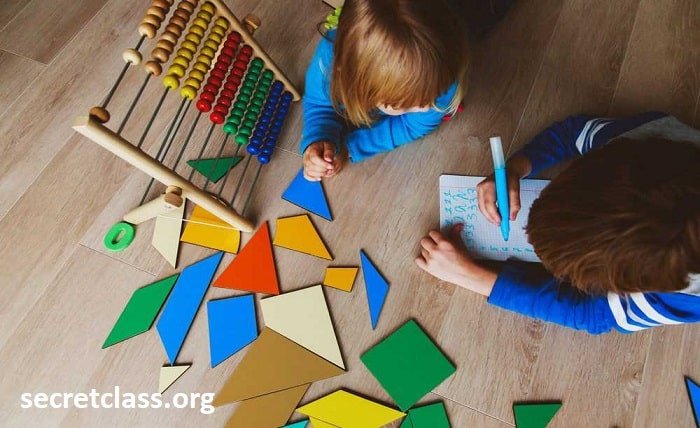Educational toys for 5-year-olds are more than just playthings; they are powerful tools for shaping young minds. In this guide, we delve into the world of playful learning, exploring the myriad benefits these toys offer in nurturing the intellectual, emotional, and social development of children at this crucial age.
1. The Importance of Educational Toys:
At the age of 5, children are in a critical stage of development, where their brains are primed for absorbing knowledge like sponges. Educational toys provide a hands-on approach to learning, engaging children in activities that captivate their interest while subtly imparting essential skills and knowledge.
2. Cognitive Development Through Play:
Educational toys for 5-year-olds are designed to stimulate cognitive functions such as problem-solving, critical thinking, and creativity. From puzzles and building blocks to STEM kits and board games, these toys encourage children to explore, experiment, and discover solutions independently.
3. Fostering Social Skills and Emotional Intelligence:
Playtime with educational toys isn’t just about solitary exploration; it also cultivates vital social skills and emotional intelligence. Through role-playing games, cooperative activities, and storytelling toys, children learn to communicate, collaborate, and empathize with others, laying the groundwork for healthy relationships and emotional well-being.
4. Encouraging Physical Development and Motor Skills:
Many educational toys for 5-year-olds are designed to promote physical activity and fine motor skills development. Whether it’s through active play with balls and outdoor equipment or precise manipulation of building materials and art supplies, children refine their motor coordination and spatial awareness while having fun.
5. Sparking Imagination and Creativity:
Imagination knows no bounds in the world of educational toys. From dress-up costumes and pretend play sets to open-ended construction toys and art supplies, these toys inspire children to dream, create, and express themselves freely, unleashing the full spectrum of their creative potential.
6. Integrating Technology in Educational Play:
In today’s digital age, educational toys for 5-year-olds often incorporate technology to enhance learning experiences. Interactive gadgets, educational apps, and coding toys introduce children to foundational STEM concepts in engaging and accessible ways, preparing them for the technological landscape of the future.
7. Selecting the Right Educational Toys:
When choosing educational toys for 5-year-olds, it’s essential to consider their individual interests, developmental needs, and learning styles. Look for toys that offer a balance of challenge and enjoyment, aligning with your child’s current abilities while providing opportunities for growth and exploration.
8. Maximizing Learning Opportunities at Home and School:
Educational toys serve as valuable extensions of learning both at home and in educational settings like preschools and daycare centers. By integrating these toys into everyday routines and curriculum activities, parents and educators can create rich learning environments that inspire curiosity and foster a love for lifelong learning.
9. The Role of Parents and Caregivers:
Parents and caregivers play a crucial role in supporting children’s play with educational toys. By actively engaging in play alongside their children, asking open-ended questions, and providing encouragement and praise, they can enhance the learning experience and strengthen the parent-child bond.
Conclusion
Educational toys for 5-year-olds hold immense potential in shaping the trajectory of a child’s development. By harnessing the power of play, these toys ignite curiosity, stimulate imagination, and lay the foundation for a lifetime of learning. With thoughtful selection, engagement, and support from parents and caregivers, every playtime becomes an opportunity for growth, exploration, and joyful discovery.
FAQ
1. Are educational toys only beneficial for cognitive development?
Educational toys offer a holistic approach to development, impacting cognitive, social, emotional, and physical domains simultaneously. Through play, children engage in multifaceted learning experiences that enrich every aspect of their development.
2. How can I ensure that the educational toys I choose are age-appropriate?
Look for toys that are specifically designed for 5-year-olds and consider factors such as complexity, safety, and developmental appropriateness. Reading product reviews, consulting with educators, and observing your child’s interests and abilities can also guide your selection process.
3. Can educational toys replace traditional learning methods like books and structured lessons?
Educational toys complement traditional learning methods by providing hands-on, experiential learning opportunities that reinforce concepts taught through books and structured lessons. They offer a dynamic and interactive approach to learning that enhances retention and understanding.
4. How can I encourage my child to play with educational toys if they prefer screen time?
Introduce educational toys gradually and make playtime enticing by incorporating elements of your child’s interests. Limit screen time and offer alternative activities that capture their attention and imagination. Over time, as they experience the joy and satisfaction of hands-on play, they may naturally gravitate towards educational toys.
5. Are there any benefits to investing in higher-priced educational toys versus budget options?
While budget-friendly options can still provide valuable learning experiences, higher-priced educational toys often offer superior quality, durability, and versatility. They may also feature advanced technologies or innovative design elements that enhance the depth and breadth of learning opportunities. Consider your budget and priorities when making purchasing decisions.
